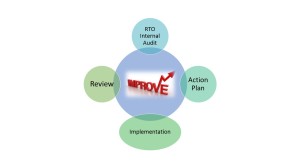There are many reasons why you should conduct continuous improvement activities like validation, and internal audits, not the least being to remain compliant. The other day I read an article about RTO who are not complaint in WA. It was staggering to read the report, released on Wednesday 24th June 2015, found 35 per cent of the 323 registered training organisations [RTOs] examined in 2013-14 were either “significantly” or “critically” not compliant with national standards.
A further 22 per cent were deemed to have minor non-compliance issues, meaning more than half of those assessed by the Training Accreditation Council (TAC) were not compliant with national standards.
If these RTOs had conducted such activities, they might not have had the non-compliances as stated.
To view the article.
Not managing quality and compliance using the Standards for RTOs 2015 is the greatest risk for RTO managers.
The report also called for the TAC (WA Regulator) to seek industry input when it planned and conducted mandatory checks, and to consider the risk to students and industry of training by non-compliant organisations.
The need for internal audits is not new, and in the new Standards there is now a requirement for RTOs to provide an annual declaration on whether the RTO complies with the Standards. this is submitted to the Regulator. For an RTO to meet this requirement, RTOs must be able to show they have implemented a system to monitor its operations. A systematic approach such as internal audits, validation activities, and other monitoring will allow managers to assess the RTO performance against the standards and maintain compliance.
If you are finding it difficult to see the wood for trees within your RTO, then using an external service. Our internal audit service is a great way to ensure your Registered Training Organisation (RTO) is meeting the requirements of the standards. A consultant will come onsite to conduct a full audit against the relevant standards and provide a written report within two weeks.
The objective of this service is to identify risks of non-compliance, provide advice for improvement and a written report of action items. Use an Internal Audit for improvement prior to your external audit by the regulator or simply as a continuous improvement process for your RTO.

